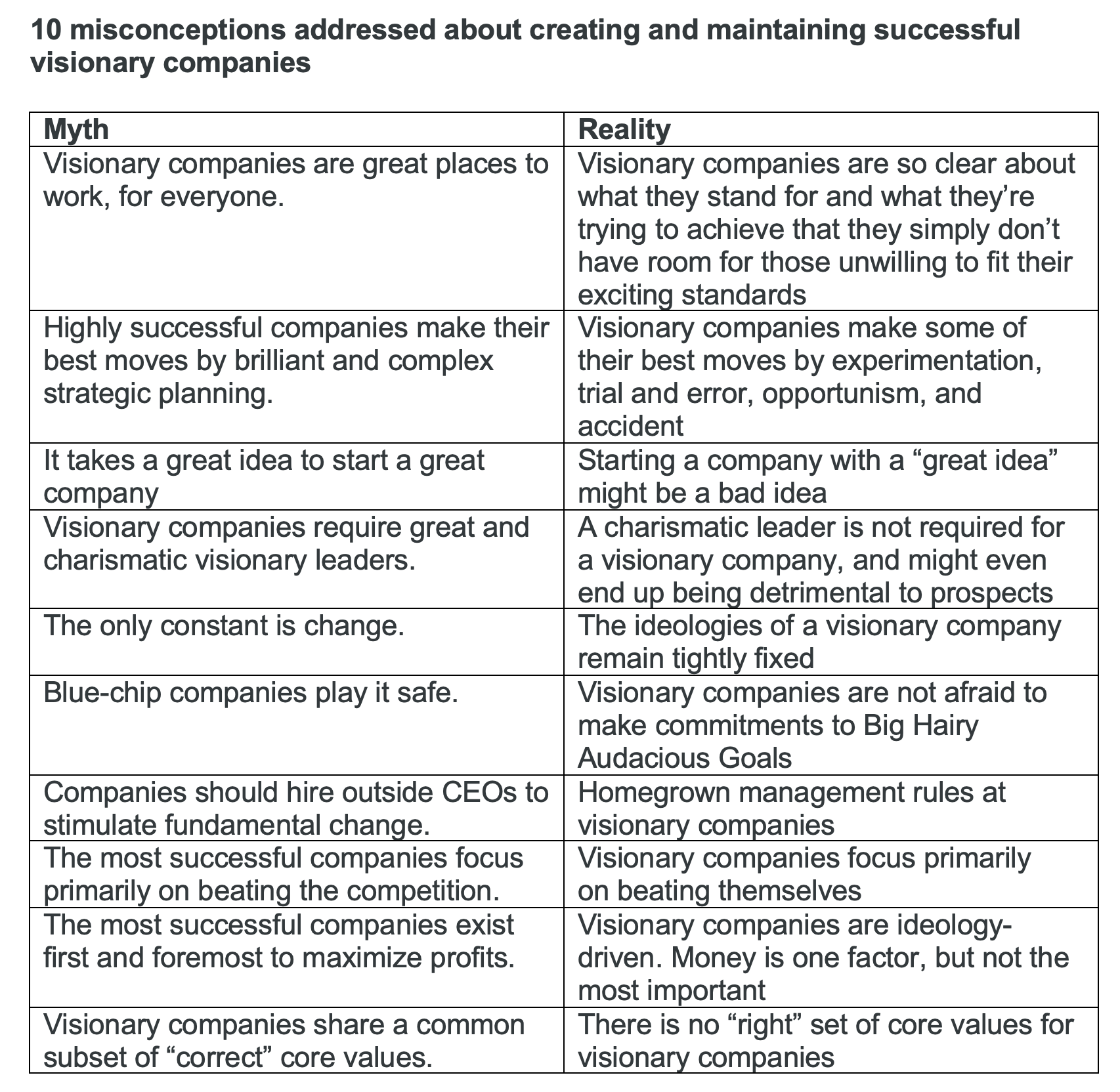Built to Last: What differentiates visionary companies?
This book is an expansion of Jim Collins's Good to Great that explains how these strategies have been implemented and what outcomes have been achieved. It is remarkable that a book published in 1994 is still relevant to our current methods. I would urge that you listen to the audio recording, which was read by the author, Jim Collins, and in which he elaborates on the issues with extra information and updates the research findings described in the book.
Built to Last is a must-read if you are an active manager at any level for a department, company or group of people. The book summarizes the findings of a six-year investigation into the causes of enduringly great companies. The book investigates 18 unique and venerable firms to determine what has contributed to their decades-long, and in some instances, almost two-century-long, success. This ground-breaking analysis shows the modest, but motivating, distinctions that distinguish these creative organizations from their less successful counterparts.
Here are a few passages from the book:
Simply having vision statements does not make a company visionary. A visionary company does not depend on a single program, strategy, technique, or method to protect its core and foster growth. Everything counts. Maintain the general needs while innovating new techniques for generating outstanding outcomes.
Work from the person to the organization at all times. The person is the organization's basis. Promote from within to protect the organization's core. Typically, homegrown employees are more committed to a company's success than those brought in from outside!!
It may be a terrible idea to wait for "a great idea" before committing to establishing a company. Not traditional objectives but the company itself is the ultimate creation. The highest prize for an innovative company is its continued existence. When HP was founded, the company lacked a "great idea”. "One of the most significant stages in developing a company is perception, not the action."
A visionary company commits one hundred percent to both its short- and long-term objectives. It is never an either-or situation. A visionary organization pursues both sustainability and prosperity, not just one or the other.
““Profit is like oxygen, food, water, and blood for the body: they are not the point of life, but without them, there is no life.”
”
Finally, one major point from Built to Last Book:
“You don’t need to create a “soft” or “comfortable” environment to build a visionary company.”
It is a challenging job to create and manage visionary companies or departments. It is not the desire to create comfortable work environments, however it is important to create the culture which will teach resilience and work discipline for the today’s and future employees.
We should also not forget one other point, visionary companies could only last with level 5 leaders and here let’s remember what the level 5 leader is! Humility, humility, humility…

